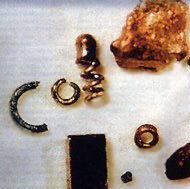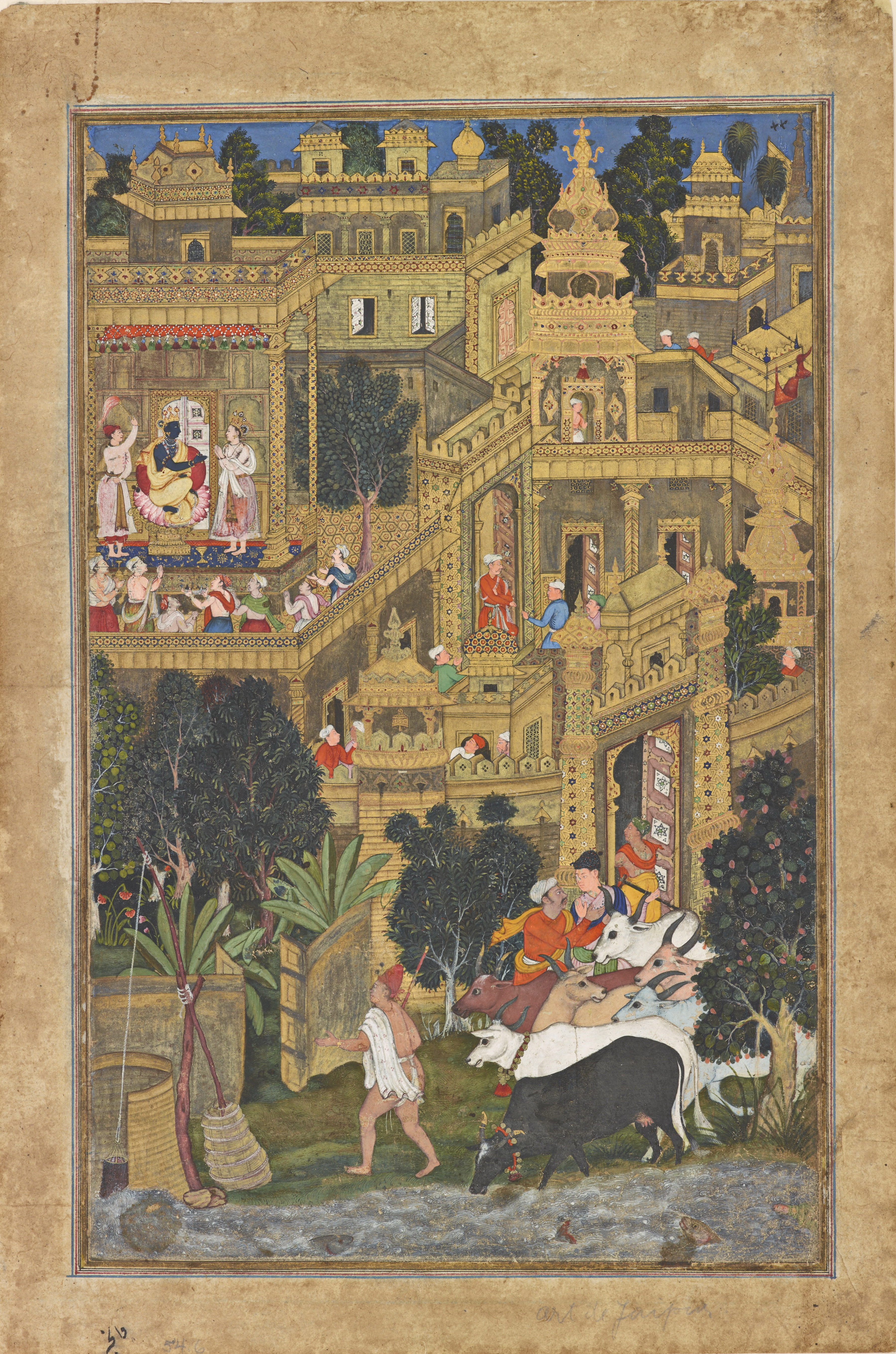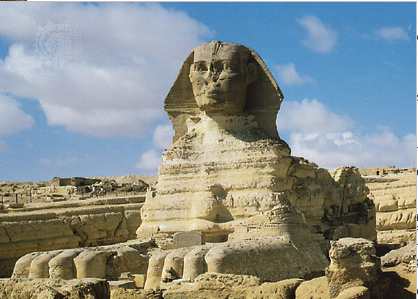3 Ancient Civilizations That Make Historians Uncomfortable
The accepted consensus among historians is that the cradle of civilization, or the beginning of large organized cities, began with Mesopotamia around 6,500 B.C. and didn't really gain momentum until around 5,000 B.C., when agricultural cities began to pop up all over the fertile crescent. The traditional theory is that before this agricultural and population boom there were only relatively small proto-cities, or large villages and towns in the neolithic period, lacking the trade, writing, and somewhat educated populations of the later and larger cities located in the fertile crescent. Recently, with the aid of modern technologies, we are finding evidence of ancient civilizations that existed directly after the last ice age, around 12,000 years ago.
Many of these cities, or evidence of cities by large stone monuments and buildings, were submerged after the glaciers of the last ice age melted and the sea levels rose. This could push back their development to beginning before the last ice age and rewrite history timelines as we know them. Most archaeologists are reluctant to say definitively the age of these civilizations or even recognize that many of them aren't natural formations, like the Bimini Road submerged off the coast of Florida. They do this mostly because carbon dating is easily disputed and because more established scholars are sticking by their outdated research. There is a stigma associated with this kind of research, as scholars are often disgraced for putting their names behind studies that confirm these older dates. These cities may be a mystery until more dependable forms of dating technologies are invented, but evidence of their great age and sophistication is already outstanding and has been causing a large stir in the archaeological community.
Many of these cities, or evidence of cities by large stone monuments and buildings, were submerged after the glaciers of the last ice age melted and the sea levels rose. This could push back their development to beginning before the last ice age and rewrite history timelines as we know them. Most archaeologists are reluctant to say definitively the age of these civilizations or even recognize that many of them aren't natural formations, like the Bimini Road submerged off the coast of Florida. They do this mostly because carbon dating is easily disputed and because more established scholars are sticking by their outdated research. There is a stigma associated with this kind of research, as scholars are often disgraced for putting their names behind studies that confirm these older dates. These cities may be a mystery until more dependable forms of dating technologies are invented, but evidence of their great age and sophistication is already outstanding and has been causing a large stir in the archaeological community.
Highly Advanced Ancient Machining That Scholars Still Cant Explain
#3 Gobekli Tepe
Gobekli Tepe was a large city located at the top of a mountain ridge in the Southeastern Anatolia Region of Turkey, and includes massive stone religious monuments and temples created by people who supposedly had not yet developed metal tools or even pottery.
 |
Found under 35 feet of sand and alongside 2 mastodon bones, which would make the artifact at least 11,000 years old.
 |
20,000 Year Old Spiral-Shaped Metal Objects Found in Russia |
These artifacts validity is often seriously questioned, but that is the point, to question historians and their definitive answers and that is what the existence of Gobekli Tepe does. But unlike the artifacts shown above, Gobekli Tepe's existence is not questioned.
Gobekli Tepe is separated into four layers ranging from the beginning of its construction until it disappeared, the oldest dating back to 12,000 years! The structures predate pottery, metallurgy, the invention of writing, and the invention of the wheel. They were even built before animal husbandry or the neolithic revolution, which occurred at around 9,000 B.C.
Archaeologists estimate that its construction would have required at least 500 round-the-clock workers to extract the 20 ton pillars from the local quarry, and carry them the half-mile to the site. Radiocarbon dating as well as comparative analysis indicate Gobekli Tepe is the oldest city known anywhere, and that at one time this epicenter attracted worshipers from up to a 100 miles away. Butchered bones found in large quantities were discovered at the site and identified as refuse from food that was hunted and prepared for it's congregants. Some believe that the carved pillars and idols representing various animals are there to protect the dead, and that Gobleki Tepe was an original cult city for the dead.
Around the beginning of the 8th century B.C. and the advent of agriculture and domestication of animals, the site lost it's importance and was abandoned. But not before its inhabitants carefully filled it in with rock and gravel, possibly to preserve it for their return.
The Advanced Pre Ice Age Civilizations that Vanished From Earth [FULL VIDEO]
The assumption is that the site was strictly a religious cult in practice and purpose and therefore uninhabited, which has been challenged with the suggestion that some of the structures served as large communal houses similar in some ways to the large plank houses of the Northwest Coast of North America with their impressive house posts and totem poles. It is not known why every few decades the existing pillars were buried to be replaced by new stones, as part of a smaller concentric ring inside an older one.
 |
About 20 of these large oval and circular rooms have been found with diameters of about 30 meters.
|
 |
| Many of the pillars are carved with 3-D reliefs in a naturalistic style |
 |
Human style sculptures were discovered; they had no mouth and a dark deep black eyes.
|
Gobekli Tepe has so far, raised more questions than answers, but it opens the door to a far older history of civilization than we ever imagined.
#2 Dwarka - Sunken City of Cambay
The name Dvārakā, or Dwarka, is said to have been given to the place by the Hindu God, Krishna. Dvārakā is one of the seven sacred cities ("saptapuri") of Hinduism. In the Mahabharata epic the city is described as a capital of the Anarta Kingdom and was built on request of Krishna, to secure the Yadava people. They left the city because of an attack by the two kings, Kalayavana and Jarasandha, before a great war erupted. It is now proven to have really existed; the remains of what has been described as a huge lost city may force historians and archaeologists to radically reconsider their view of ancient human history. Marine scientists, from the National Institute of Ocean Technology, say archaeological remains discovered 120 feet underwater in the Gulf of Cambay, off the western coast of India could be over 9,000 years old. The vast city - which is five miles long and two miles wide - is believed to predate the oldest known remains located on the subcontinent by more than 5,000 years.
Ancient Artifacts That Are Still Shrouded in Controversy Today
One of the main controversies is a piece of wood that was carbon dated to around 7500 B.C., a date which is used in arguments for a much earlier city located at the site than previously estimated. Dr. D.P. Agrawal, chairman of the Paleoclimate Group and founder of Carbon-14 testing facilities in India, stated in an article, featured in Frontline Magazine, that the piece of wood was dated twice at separate laboratories. The NGRI in Hyderabad returned a date of 7190 B.C. and the BSIP in Hannover returned a date of 7545-7490 B.C. Some archaeologists argue that the discovery of an ancient piece of wood found in these ruins, does not imply the discovery of an ancient civilization. Agrawal contends that a piece of wood used for dating is a common find and a completely valid method, given that 20,000 years ago the Arabian Sea was 100 meters lower than its current level, and that the gradual sea level rise submerged entire forests.
Author and film-maker Graham Hancock - who has written extensively on the uncovering of ancient civilizations - told BBC News Online that the evidence was compelling: "The [oceanographers] found that they were dealing with two large blocks of apparently man made structures. "Cities on this scale are not known in the archaeological record until roughly 4,500 years ago when the first big cities begin to appear in Mesopotamia. "Nothing else on the scale of the underwater cities of Cambay is known. The first cities of the historical period are as far away from these cities as we are today from the pyramids of Egypt," he said. However, archaeologist Justin Morris from the British Museum said more work would need to be undertaken before the site could be categorically said to belong to a 9,000 year old civilization. "Culturally speaking, in that part of the world there were no civilizations prior to about 2,500 BC. What's happening before then mainly consisted of small, village settlements," he told BBC News Online. Dr Morris added that artifacts from the site would need to be very carefully analysed, and pointed out that the C14 carbon dating process is not without its error margins. It is believed that the area was submerged as the ice caps melted at the end of the last ice age, around 9-10,000 years ago.
The Original Egypt - The Spinx
While some Egyptologists still maintain that the Sphinx was constructed in the 4th Dynasty, by the Pharaoh Khafre, a growing amount of evidence both archaeological and geological indicates that the Sphinx is far older than the 4th Dynasty, and was only restored by Khafre during his reign. There are no inscriptions from Khafre's reign inscribed anywhere on the Sphinx, or on any of the temples located nearby, which would offer evidence of construction by Khafre. Additionally, the "Inventory Stele" uncovered on the Giza plateau in the 19th century, tells that the Pharaoh Cheops - Khafre's predecessor - ordered a temple built alongside the Sphinx. Meaning that the Sphinx was already in place during Khafre's reign, therefore it could not have been constructed by Khafre.
A far greater age for the Sphinx has been suggested by R.A. Schwaller de Lubicz. Based on geological considerations he confirmed that the extreme erosion patterns located on the body of the Sphinx could not have resulted from wind or sand erosion, but had actually ensued from considerable water erosion that must have occurred during a lengthy submersion. Geologists agree that, in the distant past, Egypt was subjected to severe flooding. So wind erosion could not have taken place if the body of the Sphinx was completely covered in sand, as the Sphinx was buried for the majority of the last five thousand years, since the time of its alleged construction during 4th Dynasty. If wind-blown sand had indeed caused the deep erosion on the Sphinx, we could expect to find similar evidence of such erosion on other nearby monuments that were built with comparable materials and were also exposed to the elements for a congruent length of time.
Astounding Ancient Discoveries That Finally Explain the 12000 Year Old Lost Episode of History
Additional evidence for the great age of the Sphinx might be indicated by the astronomical significance of its shape, the lion. Every two thousand years, because of the procession of the equinoxes, the sun on the vernal equinox rises against the stellar background of a different constellation. For the past two thousand years that constellation has been Pisces the Fish, a symbol of the Christian age. Prior to the age of Pisces it was the age of Aries the Ram, and before that it was the age of Taurus the Bull. It is interesting to note that during the first and second century BC, approximately the Age of Aries, ram-oriented iconography was common in Dynastic Egypt, while during the Age of Taurus, the Bull-cult arose in Minoan Crete. The geological findings may indicate that the Sphinx was constructed sometime before 10,000 BC, and this period also coincides with the Age of Leo the Lion, which lasted from 10,970 to 8810 BC. Further support for the vast age of the sphinx comes from a surprising sky-ground correlation proven by sophisticated computer programs such as Skyglobe 3.6. These computer programs can generate precise pictures of the night sky, as seen from different places on earth at any time in the distant past or future.
Graham Hancock explains in Heaven’s Mirror that, “computer simulations show that in 10,500 BC the constellation of Leo housed the sun on the spring equinox - i.e. an hour before dawn in that epoch Leo would have reclined due east along the horizon in the place where the sun would soon rise. This means that the lion-bodied Sphinx, with its due-east orientation, would have gazed directly on that morning at the one constellation in the sky that might reasonably be regarded as its own celestial counterpart.”
The foregoing discussion means that the monumental sculpture of the Sphinx may have existed at a time when (according to prevailing archaeological theory) there were no civilizations on earth and humans had not yet evolved beyond hunter-gatherer lifestyles. Additionally, the Sphinx head is proportionately smaller than the rest its body and tests show that the body is carved from softer and distinctly different rock than the rock with which the head was carved from. One solution to the riddle could be that it was re-carved during Khafre's reign and re-purposed from and older and more ancient Egypt, as this would account for the smaller size of the statue's head when compared with the rest of the body. The structure, which had been buried in the desert sands even during the time of the Pharaohs, is covered with deeply grooved channels. It has been proved that these vertical grooves could only have been caused by sheets of water cascading over the sides of the statue. Furthermore, the last time the Egyptian desert was submerged, 12,000 years ago, coincides exactly with the era in which the last Great Ice Age drew to a close.
Follow Up With...
3 of History's Mysteries Debunked and Explained
http://morgana249.blogspot.com/2014/07/5-of-historys-mysteries-debunked-and.html
Charles E. Wharry (Darkbird18);
Ancient Human history is one of my very favor research subjects because the historians have not been telling us the full truth? What I learned in high school and college about human ancient history is almost all false and why would they hide the full truth from us? There is a conspiracy to hide the real truth about our ancient past because then they can't control our minds because we would know how powerful we truly are! Keep the sheep in ignorance and they will be kept from the true light of the creator and what it intended for us to be Super Beings! There is a conspiracy agenda to keep from our true path of human growth to the highest level of awareness, but why? I've found many theory's about this and some of these theories are very disturbing example: we are food for these higher beings who live off of our life force and they live in another dimension right here on earth but because we can't see them in this higher level of awareness; we're their prey, food! But our ancient past is very interesting because there is so much that is unexplained that can't be from ancient construction and science that didn't fit from that time? What is going on, what really happened back then that they must keep hidden from us? Read this article and watch the Youtube and get some answers to these questions.
http://morgana249.blogspot.com/2014/07/5-of-historys-mysteries-debunked-and.html
alternative-history, ancient-city, ancient-egypt, ancient-history, civilization, civilizations, debated-history, dwarka, egypt, gobleki tepe, oldest-cit
alternative-history, ancient-city, ancient-egypt, ancient-history, civilization, civilizations, debated-history, dwarka, egypt, gobleki tepe, oldest-cit
ies, oldest-city, sphinx, submerged-cities, the-first-egypt, supressed history, hidden history, alternative-history, alternative-history, ancient-city, ancient-egypt, ancient-history, civilization, civilizations, debated-history, dwarka, egypt, gobleki tepe, oldest-cities, oldest-city, sphinx, submerged-cities, the-first-egypt, supressed history, alternative-history, ancient-city, ancient-egypt, ancient-history, civilization, civilizations, debated-history, dwarka, egypt, gobleki tepe, oldest-cities, oldest-city, sphinx, submerged-cities, the-first-egypt, supressed history, hidden history, alternative-history, hidden history, alternative-history, alternative-history, ancient-city, ancient-egypt, ancient-history, civilization, civilizations, debated-history, dwarka, egypt, gobleki tepe, oldest-cities, oldest-city, sphinx, submerged-cities, the-first-egypt, supressed history, hidden history, alternative-history, alternative-history, ancient-city, ancient-egypt, ancient-history, civilization, civilizations, debated-history, dwarka, egypt, gobleki tepe, oldest-cities, oldest-city, sphinx, submerged-cities, the-first-egypt, supressed historyalternative-history, ancient-city, ancient-egypt, ancient-history, civilization, civilizations, debated-history, dwarka, egypt, gobleki tepe, oldest-cities, oldest-city, sphinx, submerged-cities, the-first-egypt, supressed history, hidden history, alternative-history, , hidden history, alternative-history, alternative-history, ancient-city, ancient-egypt, ancient-history, civilization, civilizations, debated-history, dwarka, egypt, gobleki tepe, oldest-cities, oldest-city, sphinx, submerged-cities, the-first-egypt, supressed history, hidden history, alternative-history, alternative-history, ancient-city, ancient-egypt, ancient-history, civilization, civilizations, debated-history, dwarka, egypt, gobleki tepe, oldest-cities, oldest-city, sphinx, submerged-cities, the-first-egypt, supressed history, hidden history, alternative-historyalternative-history, ancient-city, ancient-egypt, ancient-history, civilization, civilizations, debated-history, dwarka, egypt, gobleki tepe, oldest-cities, oldest-city, sphinx, submerged-cities, the-first-egypt, supressed history, hidden history, alternative-history, , alternative-history, ancient-city, ancient-egypt, ancient-history, civilization, civilizations, debated-history, dwarka, egypt, gobleki tepe, oldest-cities, oldes



















No comments:
Post a Comment